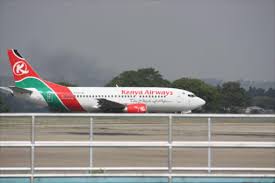
The aviation sector contributes 3.1 per cent to Kenya’s Gross Domestic Product (GDP), with a value of $3.3 billion, generating 460,000 jobs.
The report, ‘The value of air transport to Kenya released at the opening of the International Air Transport Association (AITA) Ground Handling Conference in Nairobi on Tuesday shows that 21,100 people are directly employed in aviation, generating $1.2 billion (Sh155 billion) of economic output, equal to 1.1 per cent of total GDP.
According to the report, airlines, airport operators and onsite businesses contributes $1 billion (close to Sh130 billion) and create 5,700 jobs while air navigation service providers (ANSPs) and manufacturing yield $136.2 million (Sh17.6 billion) to the economy, creating 15,400 jobs.
Tourism supported by aviation on other hand contributes $1.2 billion (Sh155 billion) to the country’s GDP and employs 242,200 people.
International tourists to Kenya are estimated to contribute $1.9 billion (Sh246 billion) annually to the economy through the purchase of goods and services from local businesses.
“Aviation creates a range of social benefits and contributes significantly to the United Nations Sustainable Development Goals (SDGs). Air transport enhances access to education, connects friends and families, facilitates cultural exchange, and drives socio-economic development,’’ the report reads in part.
Acting together, these forces enable a country to expand its productive potential, delivering long-term economic growth and supporting the reduction in poverty and improvement in living standards for all of the nation’s citizens,’’ said Willie Walsh, IATA’s director general.
The cost of flying impacts the magnitude of the benefits that can be generated by air travel.
The report shows that in the past 50 years, flight costs have decreased by 70 per cent globally, making air transport more accessible.
The average real airfare in Kenya decreased by 54 per cent between 2011 and 2023, with the local population now needing to work 35.9 days to afford a plane ticket. Overall, 106 flights per 1,000 population were taken in 2023.
Furthermore, aviation stimulates global trade and investment, enables labour and capital productivity improvements, boosts innovation, and fosters knowledge exchange.
The movement of goods, enabled by the air transport industry, brings about improved economic outcomes via catalytic collaboration, specialisation, and more efficient allocation of resources across all sectors of the local and world economy.
Aviation plays a crucial role in, for example, enabling the development of dynamic and efficient supply chains, and in driving the growth in e-commerce.
In times of crisis, the world relies on air cargo to provide humanitarian aid and emergency relief. 380,000 tonnes of air cargo were transported through airports in Kenya in 2023, supporting the country’s total import and export volumes.
International air traffic accounted for 40 per cent of total origin-destination (O-D) departures for Kenya in 2023, equal to 2.3 million passenger departures.
Africa is the largest international market for passenger flows from Kenya, followed by Europe and the Middle East.
According to IATA, almost 858,700 passengers departed from Kenya to another country in Africa (37 per cent of the total), 644,100 to Europe (28 per cent of the total), and 297,600 to the Middle East (13 per cent of the total).
The report shows that London is the most popular destination for people flying from Kenya at 126,900 passengers during the review time.
Entebbe, Uganda follows with 121,700 passengers while Dubai is third at 75,500 passengers.
Others are Johannesburg, Dar es Salaam, Addis Ababa, Zanzibar, Kigali, Milan and Frankfurt.
Since 2014, Kenya’s international air connectivity index has increased by 34 per cent within the Africa region and by 30per cent with all other region.
At least two per cent of all passengers
arriving internationally continued their journey on a domestic connection while
67 per cent of passengers either finished their journey at the point of entry
to the country or continued traveling using a different mode of transport.
Furthermore, the report shows that 31 per cent of all passengers arriving in Kenya continued their journey to a destination in another country.












